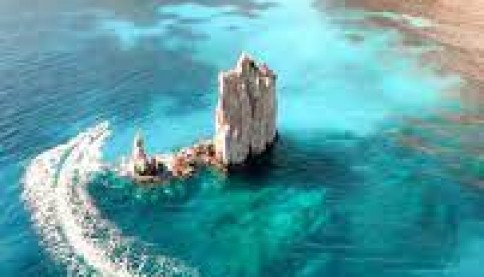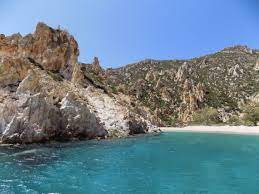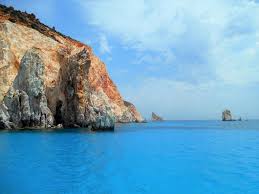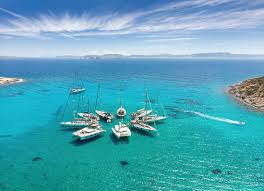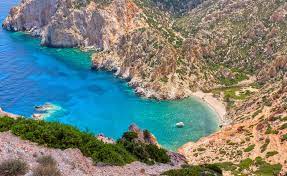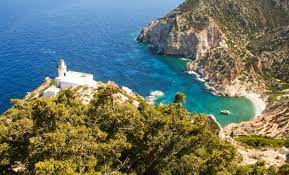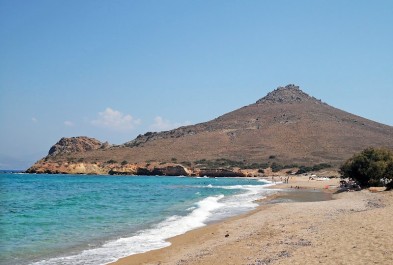Poliegos #270
- Purpose
- Excursion
- Type
- Sights
- Country
- Greece
- City
- Poliegos
Share links
Description
Polyaigos or Hyolivos or Polivos is a blue "oasis" in the middle of the Aegean and "home" for the Mediterranean seal Monachus-Monachus.
Wild rocks with elaborate formations as if sculpted by a real sculptor, turquoise and deep blue waters, deserted beaches like natural pools, on the side of Kimolos.
The island of Polyaigos is the largest uninhabited island of the Aegean and is another beautiful corner of our country. Its permanent residents, the hundreds of wild goats that make their presence felt everywhere.
Part of the island belongs to the church of Kimolos, "Panagia Odegitria", while the largest part of the island is owned by the estate of Ioannis Stavros Logothetis, which rents its lands as pastures.
On the island, which consists mainly of volcanic rocks like neighboring Kimolos and Milos, there are hills with a height of 320-350 meters.
They have geological formations that refer to works of art.
Slightly larger in area than Donoussa (area 18,146 sq. km), Polyaigos, which got its name from its wild goats, is an ideal destination for those who own a boat, but also for those who choose to visit it by excursion boats.
From ancient times until today it belongs administratively to Kimolos, but it seems that it has always been sought after for its mineral wealth. Thus Kimolos and Milos began in 416 BC. legal dispute over the ownership of the island, which ended in 338 BC. by decision of the court of the Argives, who bequeathed the island to Kimolos.
It has welcoming bays, sheltered bays and hidden caves.
On the island you can enjoy swimming in Pano and Kato Mersini, in Panagias t'Avlaki and Ammoura.
In its northwestern part, one finds ruins of the Dormition Monastery, whose church was a basilica with a dome, founded in 1622. Since 1898, there has been an imposing lighthouse on the island, on Cape Maskoula, at a height of 138 meters, on the eastern side. In recent years the beacon has been automatic.
Human activity is also evident from two quarries in the same section where tracheite, used for millstones, was mined.
Greece has included Polyaigo in the Natura 2000 program of the European Union, considering it an important habitat undisturbed by human presence. The Mediterranean monk seal gives birth to its young on the island.
It has great geological and ecological value as it is considered the best-preserved island in the Mediterranean from an environmental point of view and hosts rare or endangered endemic species of flora and fauna such as the Mediterranean seal Monachus monachus, the endemic viper Microvipera schweizeri (which lives only in Kimolos, the Polyaigo, Milos and Sifnos), the endemic blue lizard Podarcis milensis, the falcon Falco eleonore (black petrel), whose 75% of the world's population lives in the Aegean islands, the Spizaetos (Hieraaetus fasciatus), 32 endemic, rare or / endangered plant species and many wild goats.
Its wild exotic landscapes, beautiful coastlines and stunning seas are an attraction and a popular destination for private boat owners.
In the summer, Polyaigos becomes quite crowded due to the excursions that arrive from the nearby islands.
Indoor amenities
Route to location
Multimedia
Image gallery
Your Review
Please login or register to write your review
Reviews
No reviews found, be the first!


